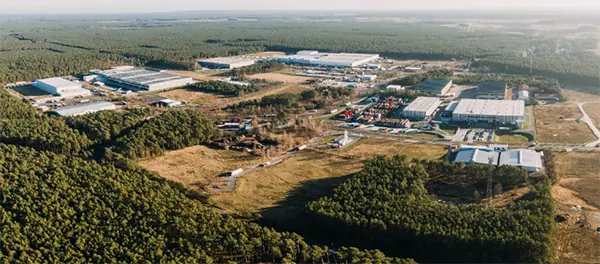Peter Hodgkinson, Director for Strategic Growth and Major Projects: Property & Buildings, WSP in Africa
Battery giga factories have a critical role in meeting net zero targets and transitioning to renewable energy sources. Access to more efficient, scalable, and environmentally sustainable battery manufacturing capabilities will assist stakeholders achieve these objectives faster.
The race for battery giga factories underscores the need for countries to acquire capabilities to maintain and grow their capacity rapidly.
Three core markets are driving the growth of battery manufacturing: battery energy storage solutions (BESS), electric vehicles (EVs), and consumer electronics (rechargeable appliances).
Battery manufacturing boom
Currently, there are 369 giga factories in the pipeline around the world to finish by 2030. The global demand for batteries is expected to increase from 185 GWh in 2020 to over 2,000 GWH in 2030. Furthermore, the value of the worldwide lithium-ion battery market size is projected to top $193-billion by 2028, reflecting a 23,3% compound annual growth rate from 2021. This has proven to be the catalyst for the construction of sustainable and efficient battery giga factories.
According to research, investments in battery giga factories hit $131-billion in 2022, a 24% increase over the previous year.
Modifying existing facilities
From new builds to refurbing and converting previously used manufacturing facilities, or expanding existing traditional battery manufacturing facilities, to giga factories, securing these investments requires a holistic approach that encompasses construction, optimisation, power supply, site selection, feedstock sourcing, sales strategy, regulatory compliance and a sustainability lens.
Fortunately, existing facilities may be retrofitted to transform into battery giga factories through an integrated approach that looks to reuse as much of the existing buildings, services and equipment at the facility as possible, even though there might be limitations of the host building.
Minimising risk
In managing risks for retrofitting facilities into battery giga factories, thorough studies are essential. This includes geotechnical and environmental assessments, evaluating flood risks considering climate change, and checking for ground contamination. Identifying materials such as asbestos and conducting concrete integrity testing is critical to gauge the effects of age and chemicals.
A documentation search is also vital. This should encompass existing drawings, reverse engineering, and reviewing maintenance records by consulting with on-site personnel and third-party vendors.
Improving the energy efficiency of an existing facility
A fundamental question to address is how to improve the energy efficiency of an existing factory. This is where developing sustainable battery giga factories requires a combination of international experience with local insights.
Working with the permitting and local authority on establishing site boundaries and zoning rights while also maintaining compliance with national and local regulations is vital. So too, are recognising the environmental conditions of where the current facility is situated. For instance, the humidity, the climate, as well as the impact of climate change.
Decision-makers must be aware that the building typically accounts for less than one-third of construction CAPEX, while services and utilities constitute the majority. T
Enabling a sustainable future
Keeping circular economy principles in mind is vital to ensuring battery manufacturing plants support the project and business’ environmental, social, and governance (ESG) goals. This includes looking at solutions to, for example, design out waste and pollution while keeping products and materials at their highest possible value, and regenerating natural systems.
This helps to drive clean growth, preserve natural capital and reduce waste, achieve net zero goals, reduce cost and improve industrial resilience.
